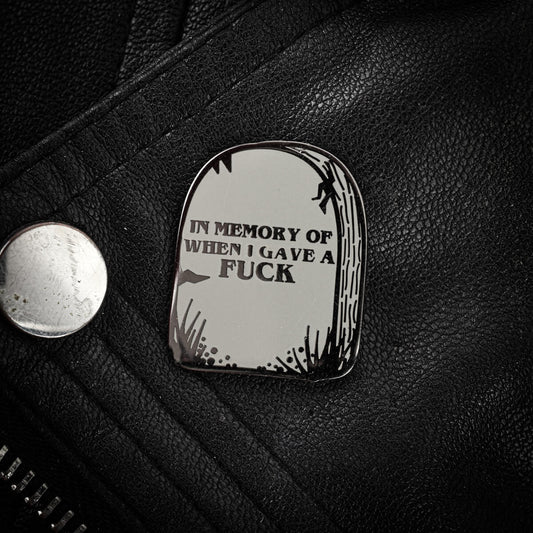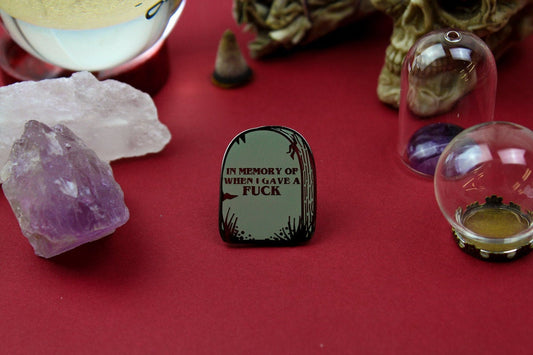
How Do Occult Rituals Work?
Share
How do different cultures view occult rituals?
Different cultures have diverse perspectives on occult rituals, shaped by their unique histories, beliefs, and traditions. In Western culture, occult rituals have often been associated with mysticism, witchcraft, and the supernatural.
Historically, during periods like the Middle Ages and the Renaissance, these rituals were sometimes seen as heretical or dangerous, leading to witch hunts and persecution. However, in modern times, there has been a resurgence of interest in occult practices, particularly within New Age and neo-pagan movements. Many view these rituals as a means of personal empowerment, spiritual growth, and connection with nature.
In Eastern cultures, such as those in India, China, and Japan, occult rituals are often intertwined with religious practices and traditional medicine. In Hinduism, rituals involving mantras, yantras, and specific rites are used to invoke deities and achieve spiritual goals. Chinese culture has long included practices like feng shui and Taoist rituals, which seek to harmonise the flow of energy (chi) in the environment. Japanese Shinto practices include rituals to honour kami (spirits) and seek their blessings.
Many African cultures have rich traditions of occult practices, often referred to as traditional African religions. These rituals are typically community-focused and involve ancestors, spirits, and deities. Practices like divination, spirit possession, and healing rituals are common. In regions where Christianity and Islam have spread, traditional occult practices often merge with these religions, creating unique syncretic traditions.
Indigenous cultures in the Americas, such as Native American tribes and various South American indigenous groups, view occult rituals as integral to their spirituality and way of life. These rituals often involve shamanism, where shamans act as intermediaries between the physical and spiritual worlds. Ceremonies might include drumming, chanting, and the use of sacred plants to induce altered states of consciousness for healing and guidance.
In Middle Eastern cultures, particularly in areas influenced by Islam, occult practices are often viewed with suspicion or outright disapproval due to religious doctrines. However, historically, there have been rich traditions of mysticism and esoteric practices within Islam, such as Sufism. These practices involve rituals aimed at achieving spiritual enlightenment and closer union with the divine.
Today, globalisation and the internet have facilitated the blending of occult practices from various cultures. People now have access to a wide array of occult knowledge, leading to a more eclectic and personalised approach to rituals. This has fostered a growing community of practitioners who draw from multiple traditions to create their own unique practices.
What are the common types of occult rituals?

Occult rituals encompass a wide range of practices aimed at influencing the unseen forces of the universe. Here are some of the most common types of occult rituals:
Divination Rituals
Divination rituals are performed to gain insight into the future or to uncover hidden knowledge. Common methods include tarot card readings, rune casting, scrying with a crystal ball or mirror, and the use of pendulums. These rituals often involve meditative states and the invocation of spiritual entities for guidance.
Protection Rituals
These rituals are designed to shield individuals or spaces from negative energies and harmful influences. They can involve the creation of protective charms or talismans, the drawing of protective symbols (like pentagrams or circles), and the use of protective herbs and stones. Smudging with sage or other sacred herbs is also a common protection ritual.
Healing Rituals
Healing rituals focus on restoring physical, emotional, or spiritual health. They may involve energy work, such as Reiki or chakra balancing, as well as the use of healing herbs, crystals, and candles. Some rituals call upon deities or spirits known for their healing powers.
Banishing Rituals
Banishing rituals aim to remove unwanted energies, spirits, or influences from a person or place. These can include the casting of spells, the use of salt or holy water, and the burning of specific incense or herbs. Banishing rituals are often performed before other rituals to create a purified space.
Love and Attraction Rituals
These rituals seek to attract love, enhance relationships, or increase personal charm. They might involve the use of love spells, potions, and the creation of love talismans. Candles, rose petals, and personal items are often used to focus the intent of the ritual.
Wealth and Prosperity Rituals
Rituals for wealth and prosperity are designed to attract financial abundance and success. These can include money spells, the creation of prosperity altars, and the use of green or gold candles. Crystals like citrine and pyrite are commonly used, as well as herbs like basil and cinnamon.
Binding and Cursing Rituals
Binding rituals are intended to restrict someone's actions or influence, often to prevent them from causing harm. Cursing rituals, on the other hand, aim to bring misfortune or harm to a target. These rituals are considered highly controversial and are generally approached with caution due to ethical considerations and potential repercussions.
Seasonal and Sabbat Rituals
Many occult traditions, particularly Wicca and other forms of neopaganism, celebrate the changing seasons and the cycles of the year through rituals known as Sabbats. These rituals honour natural cycles and deities associated with different times of the year, such as the solstices, equinoxes, and cross-quarter days. They often involve communal feasts, dances, and offerings.
Invocation and Evocation Rituals
Invocation rituals involve calling upon deities, spirits, or other supernatural entities to invite their presence and assistance. Evocation rituals, in contrast, summon these entities to appear and interact more directly, often within a contained space like a magic circle. These rituals require precise knowledge and respect for the entities involved.
Initiation Rituals
Initiation rituals mark the entry of an individual into a specific occult tradition or group. These ceremonies often involve symbolic acts, oaths, and the bestowal of new knowledge or powers. Initiations can be deeply transformative, signifying a significant spiritual or personal milestone.
Meditation and Astral Projection Rituals
These rituals aim to achieve altered states of consciousness for spiritual exploration or contact with other realms. Meditation rituals can involve chanting, breath control, and visualisation techniques. Astral projection rituals seek to facilitate the separation of the astral body from the physical body to explore the astral plane.
How are occult rituals typically performed?

Occult rituals are typically performed through a combination of preparation, symbolic actions, and focused intent, creating a structured and meaningful framework for magickal work.
The first step involves preparation, where the practitioner clarifies their purpose or goal. This intent guides the entire process and is articulated in a simple, clear statement. The ritual space is then cleansed to remove any negative or unwanted energies, often by smudging with sage or other sacred herbs, sprinkling salt or holy water, or using sound such as a bell or singing bowl. Practitioners gather the necessary tools and materials, which may include candles, incense, crystals, herbs, a chalice, an athame (ritual knife), and other items relevant to the ritual’s purpose. Many practitioners cast a circle to define a sacred space, walking in a circle while visualising or invoking a protective barrier that contains the ritual’s energy and keeps out unwanted influences.
Symbolic actions play a crucial role in these rituals. Practitioners may call upon deities, spirits, or elemental forces to assist, using chanting, prayer, or specific invocation phrases. Candles and incense are often lit to represent fire and air and to set the mood, with different colours and scents chosen based on their correspondence with the ritual’s intent. Symbols and sigils are drawn or arranged to represent the desired outcome, written on paper, carved into candles, or traced in the air. Words of power, chants, or incantations are recited to focus the practitioner’s intent and raise energy, activating the ritual’s purpose.
Focused intent is essential for directing the energy raised during the ritual towards the intended goal. Practitioners often visualise the desired outcome vividly in their mind’s eye, using mental imagery to channel energy effectively. Energy is raised through various means such as drumming, dancing, singing, or intense concentration and visualisation. In some traditions, offerings or symbolic sacrifices are made to appease or honour the invoked entities, which could include food, drink, flowers, or other symbolic items.
Concluding the ritual involves grounding any excess energy, which can be done by eating, drinking, or visualising energy returning to the earth. Any deities, spirits, or forces that were called upon are thanked and respectfully dismissed. If a circle was cast, it is closed by walking in the opposite direction and visualising the barrier dissolving. Practitioners often spend time reflecting on the ritual’s experience and any insights gained, sometimes keeping a journal to document the ritual and its outcomes.
Rituals can vary widely depending on the specific tradition or path followed. For example, Wiccan rituals might follow the structure of calling the quarters and invoking the God and Goddess, while a Chaos Magician might employ more eclectic and personal methods. Despite these variations, the core elements of preparation, symbolic action, and focused intent are common across many types of occult rituals, ensuring that each ritual is performed with clarity and purpose.
What tools and materials are used in occult rituals?

Occult rituals often involve a variety of tools and materials, each serving a specific purpose and holding symbolic significance. Here's an overview of the common items used in these practices:
Tools
Athame: A ceremonial knife, often with a double-edged blade. It's used for directing energy, casting circles, and various ritual actions. It is not typically used for cutting physical objects.
Wand: A tool for directing energy, invoking deities, and focusing intent. Wands can be made from various materials, including wood, metal, or crystal.
Chalice: A cup used to hold liquid offerings such as water, wine, or juice. It symbolises the element of water and is often used in rituals of communion or libation.
Pentacle: A flat disc inscribed with a pentagram or other sacred symbols. It represents the element of earth and is used for consecration and protection.
Cauldron: A small pot used for mixing ingredients, burning offerings, or as a focal point for transformation rituals. It symbolises the element of water and the womb of the Goddess in Wiccan traditions.
Candles: Used to represent the element of fire and to set the mood for the ritual. Different colours correspond to different intentions (e.g., white for purity, red for passion, green for prosperity).
Incense Burner: Holds incense, which is burned to purify the space and invoke spirits. Different scents correspond to different purposes (e.g., frankincense for protection, sandalwood for healing).
Bell: Rung to clear the energy of a space, to mark the beginning and end of a ritual, or to summon spirits. The sound is believed to dispel negative energies.
Book of Shadows: A personal journal where a practitioner records their rituals, spells, and experiences. It serves as a reference and a way to track progress.
Tarot Cards/Runes: Used for divination, providing insights and guidance through symbolic imagery and archetypes.
Materials
Crystals and Stones: Each type of crystal or stone has specific properties and is used to amplify energy, provide protection, or support healing. Common examples include amethyst for spiritual growth, quartz for clarity, and obsidian for protection.
Herbs: Used for their magickal and medicinal properties. Herbs can be burned, made into teas, or used in sachets and charms. Examples include sage for cleansing, lavender for peace, and rosemary for protection.
Oils: Essential oils are used for anointing candles, tools, and the body. Each oil has specific correspondences, such as lavender for calming and eucalyptus for purification.
Salt: Often used for protection and purification. Salt can be sprinkled around the ritual space, added to water, or used to create a protective circle.
Feathers: Represent the element of air and are used in rituals to cleanse and move energy. Different bird feathers have different symbolic meanings.
Bowls: Used to hold water, salt, or other ritual ingredients. They can also be used for scrying, where water or another reflective surface is used to gain visions.
Ritual Robes/Clothing: Special clothing worn during rituals to signify the separation from the mundane world. These garments often have symbolic colours and are sometimes inscribed with sacred symbols.
Offerings: Items given to deities or spirits as a sign of respect and gratitude. These can include food, drink, flowers, or other meaningful objects.
Sigils and Symbols: Drawn or inscribed during rituals to focus intent and summon specific energies. Sigils are often created by combining letters or shapes into a single, unique symbol.
Altar: A dedicated space where all the ritual tools and materials are arranged. The altar serves as the focal point of the ritual and a place to honour deities and spirits.
Personal Items
Photographs: Used in sympathetic magick, where items related to a person (such as a photograph) are used to direct energy towards them.
Jewellery: is often enchanted or blessed to carry protective or empowering energies. This can include rings, necklaces, or bracelets.
Each tool and material has a specific role and meaning, contributing to the overall effectiveness of the ritual. By carefully selecting and consecrating these items, practitioners enhance their connection to the spiritual forces they are working with.
What are the risks and precautions associated with occult rituals?

Occult rituals, while often practiced with positive intentions, come with inherent risks that necessitate certain precautions to ensure safety and effectiveness. Engaging in these practices can sometimes lead to psychological stress or anxiety, especially if the practitioner is not mentally prepared. The intense focus and altered states of consciousness that rituals induce can be overwhelming for some individuals. Additionally, if rituals are performed incorrectly or without clear intent, they may produce unintended results, ranging from mild disturbances to more serious disruptions in one's life.
Another significant risk is the attraction of negative energies. Invoking or evoking spirits or entities can sometimes draw malevolent forces, leading to feelings of unease, bad luck, or even harmful influences. Physical hazards are also a concern, particularly when rituals involve fire, such as with candles and incense, or sharp objects like athames. Improper handling of these elements can result in burns, cuts, or toxic reactions from certain herbs or substances. Furthermore, practicing occult rituals in communities or cultures that view these practices sceptically can lead to social repercussions, including ostracism, conflict, or even legal issues in some regions.
To mitigate these risks, several precautions are essential. Mental preparation is crucial; practitioners should ensure they are in a stable and clear mental state before performing any ritual. Meditation and grounding exercises can aid in achieving this. Defining a clear and precise intent for the ritual helps focus the energy and reduces the likelihood of unintended consequences. For those new to the practice, seeking guidance from experienced practitioners or reliable sources is vital to understanding the correct procedures and meanings behind rituals.
Protection rituals play a key role in safeguarding against negative influences. Performing these rituals before and after the main ritual can involve casting a protective circle, using protective symbols, or carrying talismans. Ensuring physical safety is also important. This includes maintaining a safe ritual space, keeping flammable materials away from open flames, handling sharp objects with care, and knowing the properties of any herbs or substances used.
Respect and caution are paramount when invoking spirits or deities. Proper research into the entities involved ensures appropriate and respectful interactions. Choosing a clean and quiet environment for the ritual helps maintain focus and prevents outside disturbances. Grounding and centering oneself after a ritual is important to return to a balanced state. Simple activities like eating, drinking water, or touching the earth can aid in this process.
Keeping a journal or Book of Shadows to document rituals, experiences, and outcomes provides valuable insights and helps track progress. Engaging with a community of like-minded practitioners offers support, guidance, and feedback. Ethical considerations should always be at the forefront of occult practices. Adhering to the principle of "harm none" avoids causing harm to others or oneself. Obtaining consent is crucial when involving others, particularly in rituals meant to influence other people's lives or emotions. Using magick responsibly, understanding that every action has a reaction, and being prepared to accept the consequences of rituals are fundamental to maintaining balance and responsibility in practice.
What are some examples of famous occult rituals in history?
Throughout history, numerous occult rituals have captured the imagination and curiosity of people across cultures. One of the most renowned is the Eleusinian Mysteries of ancient Greece, which were secret religious rites held annually in honour of Demeter and Persephone. These rituals, shrouded in mystery, promise enlightenment and a glimpse of the afterlife, blending elements of myth, agriculture, and spiritual rebirth.
In medieval Europe, the practice of alchemy was both a scientific and occult pursuit. Alchemists conducted elaborate rituals aimed at transmuting base metals into gold and discovering the philosopher's stone, a substance believed to grant eternal life. Figures like Paracelsus and Nicolas Flamel became legendary for their supposed successes and esoteric knowledge.
The Hermetic Order of the Golden Dawn, founded in the late 19th century, is another pivotal example. This secret society combined elements of Kabbalah, astrology, tarot, and ceremonial magick. Its complex initiation ceremonies and structured rituals influenced many modern occult practices. Aleister Crowley, a notable member, further popularised these rituals through his writings and the establishment of Thelema, a new religious philosophy.
In more recent history, the Voodoo rituals of Haiti have fascinated and often been misunderstood by outsiders. Voodoo ceremonies involve drumming, chanting, and dancing to summon spirits (loa) to possess the participants and offer guidance or healing. These rituals, deeply rooted in African traditions, reflect a rich spiritual heritage and the blending of various cultural influences due to the transatlantic slave trade.
The Salem witch trials of the late 17th century also brought attention to occult practices, albeit through a lens of fear and persecution. Accusations of witchcraft led to a series of trials and executions, driven by hysteria and the belief in dark, occult rituals. Although the actual practices of those accused were often benign or misunderstood, the trials have become a symbol of the dangers of mass paranoia and superstition.
Another intriguing example is the rituals of the Freemasons, a fraternal organisation with roots in the medieval stonemasons' guilds. Freemasonic rituals, rich in symbolism and allegory, involve elaborate ceremonies of initiation and progression through various degrees of membership. These rituals aim to impart moral and philosophical lessons, contributing to the air of mystery surrounding the organisation.
These famous occult rituals from history illustrate the diverse ways in which humans have sought to connect with the unseen, manipulate natural forces, and seek deeper understanding and power. Each ritual, in its unique cultural context, reflects the interplay between belief, tradition, and the quest for knowledge beyond the ordinary.
To learn more about the occult as a whole, have a read of our longer article all about the occult.
Fancy gifting your pals some cool Wicca jewellery? Have a look at our Wicca Pentagram Earrings and Wicca Pentagram Necklace!













